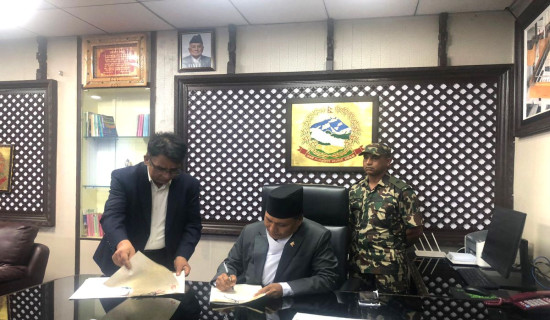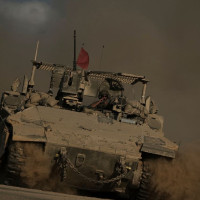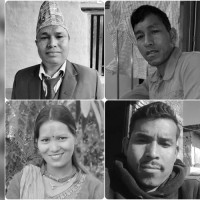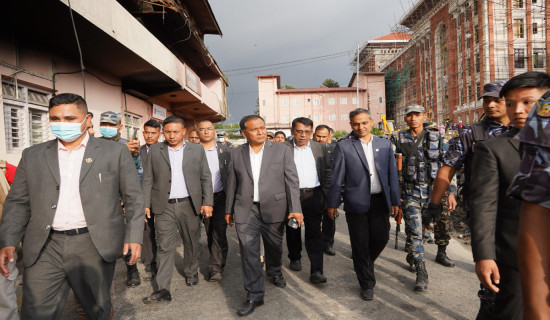- Thursday, 18 September 2025
Halesi: Multi-ethnic Pilgrimage Destination
Halesi, a significant pilgrimage destination in eastern Nepal, stands as a profound blend of cultural, religious, and ritualistic richness, deeply intertwined with the Hindu, Tibetan Buddhist, and Kirati (Rai) communities. The Halesi caves, revered as the Halesi Mahadev Temple by Hindus, are intrinsically linked to Mahadev, a manifestation of Lord Shiva. The temple is also considered one of the Pashupatinath temples in Nepal, and it is believed to be a place where Lord Shiva took refuge to escape from the demon Bhasmasur. Halesi caves are known as sacred places to Buddhists, who consider them to be the caves associated with the legend of Padmasambhava. The presence of a Buddhist stupa adjacent to the Hindu temple reflects the harmonious coexistence of these two major religions in Nepal. Further, the Kirati Rai of the region worship Halesi as an ancestral deity of the community. The Kirat mundhum, a rich oral tradition of the Kirats, manifests that their ancestor Raechhakule (Khokchilipa), also known as Hetchhakuppa, used to stay inside the Halesi cave in the remote past. This cultural diversity adds depth to the spiritual experience for visitors by adding a layer of mythology and spirituality to the site, making it an important pilgrimage destination for Hindus, Buddhists, and Kirat.
The spiritual landscape of Halesi encompasses beliefs, traditions, and legends associated with both grand and subtle traditions, including textual, oral, and transcendental cultural practices. Recent initiatives are oriented towards promoting Halesi as a tourism destination, a phenomenon emblematic of pilgrimage tourism discourse. Various discussions and exercises are under way among stakeholders, including locals, hospitality providers, religious authorities, and pilgrims, to develop Halesi as a destination frequented by both pilgrims and secular tourists, catalysing economic growth within local communities engaged in the tourism sector. The burgeoning influx of pilgrims has augmented the socioeconomic landscape of Halesi, drawing attention from diverse stakeholders cognizant of its significance as a polyethnic pilgrimage tourism destination. As articulated, "a tourist is half a pilgrim if a pilgrim is half a tourist," encapsulating the symbiotic relationship between pilgrimage and tourism within Halesi's evolving narrative.
Halesi Tuwachung Municipality at Khotang district has recently proposed the Halesi Cultural Circuit (HCC), which will connect various cultural, historical, and sacred sites within the municipality. It will be a landmark for revitalising Kirat Civilization (Mundhum) in eastern Nepal, which is associated with myths related to the initial phases of human civilization, including harvesting of crops, knitting early forms of fabrics, and generating water on dry mountain slopes for agriculture and sustainable livelihood. The study of HCC has been recently completed by a team of experts including historians, tourism and biodiversity experts, information technology experts, and religious leaders. The expert team visited various sites as a part of HCC and promoted the documentation of historical, cultural, and biocultural heritage around the Halesi sacred cave. HCC, as it is proposed, would be an excellent opportunity for visitors to move around Halesi caves, as well as other caves, historical places, and natural landscapes. This will certainly extend visitors’ stays at Halesi, which will definitely improve tourism while contributing to the conservation of the historical, natural, and biocultural treasures of the region.
'Mundum International Art Exhibition 2024' was held from February 17–29 at Nepal Art Council Kathmandu, which was organised by Diktel Rupakot Majhuwagadhi Municipality of Khotang district. President Ram Chandra Paudel inaugurated the art exhibition, which introduced the natural and cultural heritages of the Mundhum civilization (Kirat) of Khotang district in a new way through paintings. The exhibition was a huge success. This included around 109 paintings by 43 painters who made live paintings by visiting different places in the district from October 4–8, 2023, for the promotion of local cultural, religious, and tourism areas. These paintings will be placed in the cultural museum at Diktel, Khotang which will play a crucial role in preserving culture and heritage while also attracting tourists through unique and enriching experiences.
The local governance in Nepal has taken on the shape of modern global democratic values after a gap of two decades that formally resumed through the elections in 2017. It was the first election held under the new constitution. Mayors, deputy mayors, chairpersons, vice chairpersons, members of municipalities, and rural municipalities were elected. The local governments have started functioning as a more powerful, functional, and autonomous unit of government. However, there are still numerous challenges to translating the constitutional provisions into practice. Local governments serve as the most proximate governing bodies to local communities, facilitating their daily lives and playing a crucial role in preserving historical and biocultural heritage, which contributes to their sustained well-being. In this context, the proposed Halesi Cultural Circuit (HCC) and the Mundhum International Art Exhibition are highly significant initiatives spearheaded by local governments. These endeavours hold profound long-term implications for tourism promotion within the region, as well as the conservation of invaluable cultural and biological resources. These types of initiatives would definitely encourage young people to initiate small businesses at the local level, including tourism services, local agriculture, and livestock, and to explore many opportunities based on their indigenous knowledge and the use of modern technologies for improving livelihoods.
There is huge potential for trekking and tourism in eastern Nepal, along with agriculture, horticulture, and livestock. The recently opened Mundhum Trekking Trail (MTT) has been highly successful as a new trekking route along the temperate mountains that goes along hilltops ranging from 2000 to 4000m altitude, providing easy access to every age group trekker's round-the-year trekking experience. The municipalities of Bhojpur, Khotang, Solukhumbu, and Sankhuwasabha have issued a joint resolution to develop and promote the Salpa Pokhari area and Mundum trail as important tourist destinations. This beautiful region is full of biological diversity, which the local governments have pledged to safeguard and promote as a national asset. These new trekking routes are awaiting some investments in terms of infrastructure building and developing human resources for sustainable tourism promotion. The local governments have set a target of bringing in at least one hundred thousand tourists to the region by 2025. All the rural municipalities have agreed to allocate a budget to commemorate Mundhum Trail Visit Year 2025, with the goal of making Mundhum Trail the foundation of prosperity for people living in this region in the following years. The government has to nurture such types of opportunities timely, despite the hassles of declaring many new tourist destinations at once and doing nothing for their promotion and development.
(The author is an assistant professor of the Central Department of Botany at Tribhuvan University.)

















